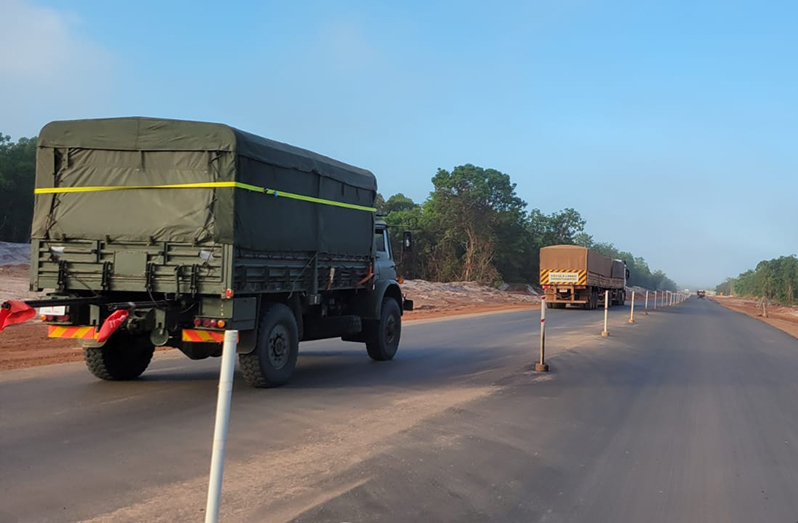–Edghill warns unfavourable weather will not be tolerated as excuse for delay
WITH the goal of drastically changing the hinterland logistics, the Government of Guyana is urging the contractor of the Linden to Mabura route to capitalise on the ideal weather conditions so that the critical road link could be completed within the allotted time by 2025.
Minister of Public Works, Juan Edghill, told the Sunday Chronicle that despite the substantial amount of work that is currently being done on the Linden to Mabura Road, the contractor is behind schedule.

“While the contractor and his team are working to get the road completed by 2025, I must say that I am pleased that they are maintaining a road that is passable, and motorists do not have to encounter all the possible challenges that come with having this magnitude of rehabilitation work.
“However, with the execution, the asphalting, the putting in of paves, the building of bridges and culverts, and other road works, they are behind on time. They are working, but based upon the plan that they would have given me, they should have already passed Rockstone Village, but they are not yet there,” Minister Edghill told this newspaper.
In May last year, the government signed a historic $US190 million ($32,501,421,713) contract with the Brazilian company Construtora Queiroz Galvao S.A. to commence the construction of the road.
“I want to remind the contractor and all the other contractors to take advantage of the weather right now. We are having lots of sunny days, and I would expect them to know that one of the challenges of working in the interior is the frequent rainfall, which can prevent work for several days and sometimes even longer.

“Right now, the rainy season is stepping in, so I am hoping that unfavourable weather will not be an excuse for unfinished projects; we had more than enough sunny days,” Edghill warned.
The Public Works Minister added that the Linden to Mabura Road project is not a stand-alone project but an essential part of the People’s Progressive Party/Civic (PPP/C) strategic plan, which connects Guyana with its surrounding neighbours. “The roads are part of our strategic plan to ensure connectivity, linking the coastland with the hinterland and, more specifically, the connectivity between Guyana and Brazil, which will open up new areas of trade and economic activity in northern Brazil.
“It will also be a link to the deep-water harbour where we would be able to move goods in and out of northern Brazil through this route. This road is not a stand-alone project; it is being accompanied by the construction of 45 other bridges to actual standards along the route; 13 of the bridges will be from Mabura Hill to Kurupukari and 32 from Kurupukari to Lethem,” Minister Edghill explained.

Additionally, the road will be connected to the highway, enhancing the East Bank Corridor and the Soesdyke/Linden highway projects. The Public Works Minister also cited improvements along the East Coast of Demerara, the building of a bridge over the Corentyne River, and a connection to the four-lane development from Palmyra to Moleson Creek.
“Every project that the PPP/C has undertaken has greatly benefitted the people of Guyana; the people are excited about what is happening, and we have to ensure that we get economy, efficiency, and effectiveness.
“The [political] Opposition failed because they were unable to deliver that to the people. You will always find them criticising because that’s their only modus operandi. However, we are not bothered by that because we will continue to deliver on what we promise, and that is modernising and transforming Guyana under President Ali’s leadership, and the Ministry of Public Works has taken the lead in doing just that.”

The entire 121.2-kilometre Linden to Mabura Road is expected to be finished by 2025. The binder course, or “lower part of the surfacing,” has been placed on the stretch of road that starts around 7+500 km just before Rockstone Junction, Upper Demerara-Berbice, and goes up to 3km.
The asphalt binder is both waterproof and works as a thermoplastic adhesive. Next, the wearing course will be applied ahead of the lanes and standard road markings.



.jpg)









